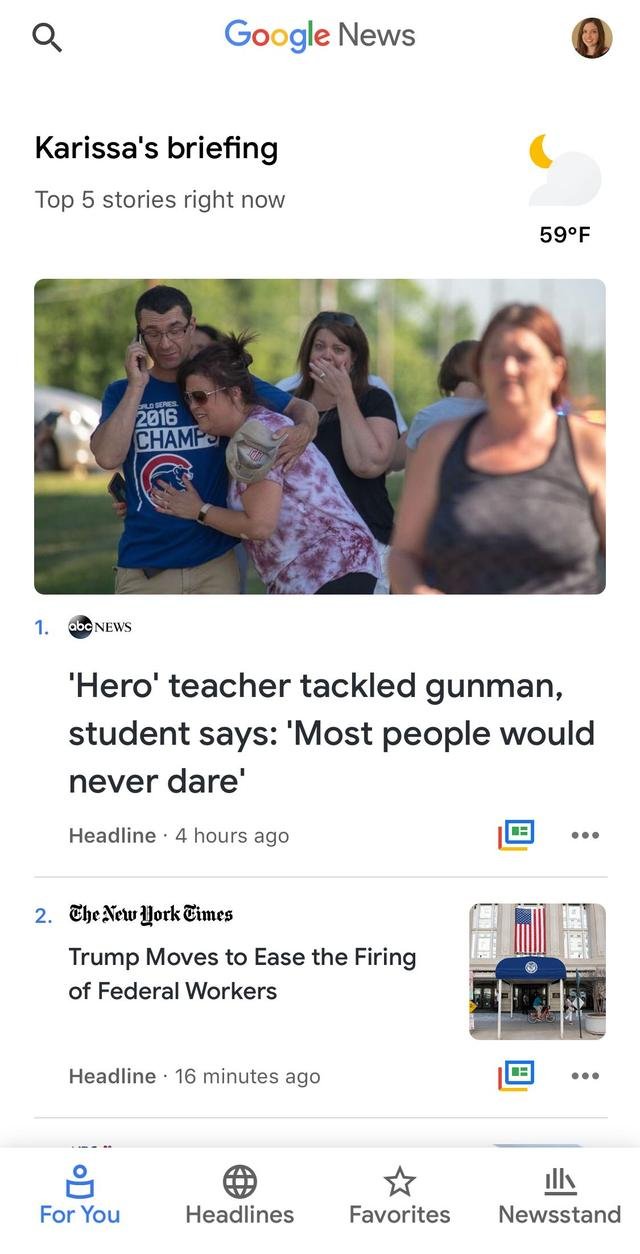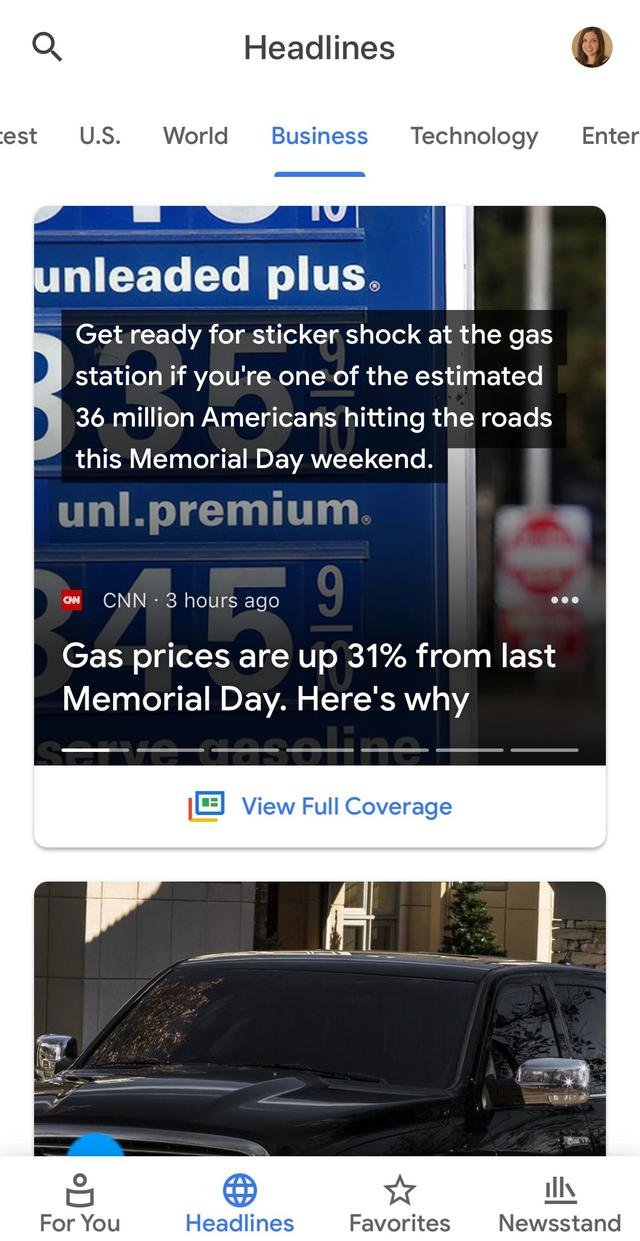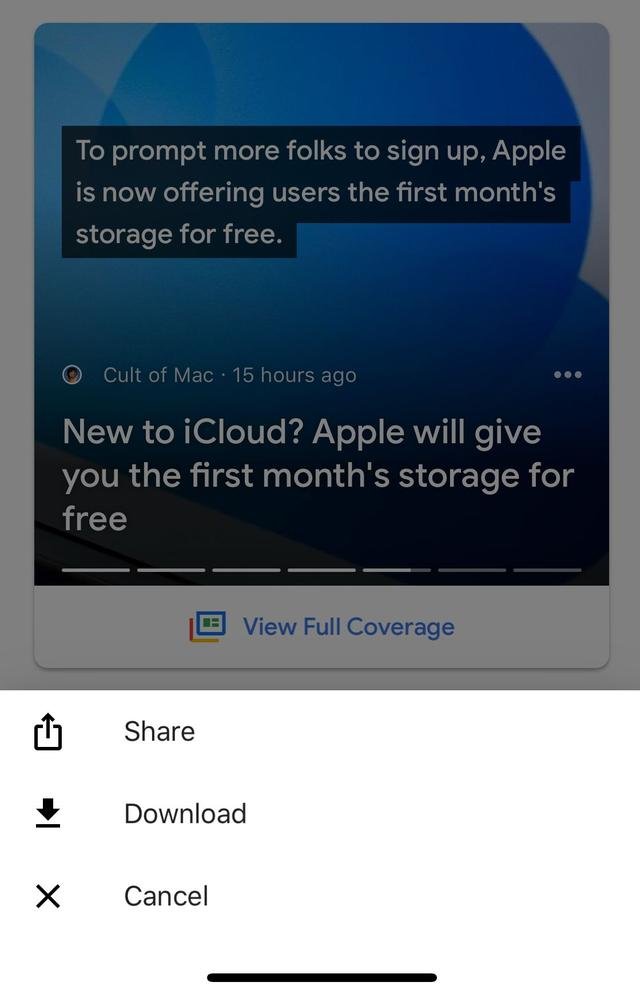Review: the Google News app is a news junkie's dream come true

Google News
$Free
The Good
Tailor-made for news junkies • Lightning fast • even video • Offline reading lets you take the news with you
The Bad
Might be overwhelming for casual readers • Interface can be difficult to naviagte
The Bottom Line
If you're serious about the news, Google News is one of the most thorough news apps you can find.
Mashable Score3.75
Cool Factor3.0
Learning Curve3.0
Performance4.5
Bang for the Buck4.5
Remember when news apps used to be cool? Seriously, there was a time when indie news apps were not only plentiful, they were the darlings of tech and media circles.
At some point the platforms and legacy media companies swooped in and swallowed up most of the good ones. Since then, we've been left to rely on the bigger platforms for news. There are exceptions, of course, but it's no coincidence that the death of the indie news app coincided with the increasing dominance of Twitter, Flipboard, Apple News, and, yes, Facebook.
Where Google fits into all of this, though, was something of a question mark until recently. Though Google News is very popular on desktop, its app has long felt like an afterthought (and a clunky one at that).
That changed earlier this month when the company announced it was launching a brand new Google News app for iOS and Android.
"News with a dash of AI"
Like all of Google's recent products, the company's infused some of its AI smarts into Google News, though it's not readily apparent from first glance.
The app, which connects to your Google account, is divided into four main sections: For You, Headlines, Favorites, and Newstand. There's a bit of overlap between the four, but all serve a slightly different purpose.


"For you" is where you can find a personalized feed tailored to your interests. Headlines is more of a general overview, where you can browse news in different categories, like U.S., World, Business, Sports, etc. Favorites is where you can find shortcuts to topics you've opted to follow, either specific stories (e.g: U.S. midterm elections), locations, or publications. Finally, Newsstand is a stream of links to specific publications organized by interests.
But what stuck out the most when I started using the Google News app is just how much is in there. If you're someone who likes to dive into story after story, you definitely won't be disappointed with the number of options in the app.
If all that sounds a bit overwhelming, then you'll appreciate the addition of an extra layer of intelligence. This is most apparent in the "For You" section, which surfaces a quick snapshot of all the latest stories you're most likely to care about based on your habits and interests. (You can also provide feedback in the app with more granular controls like "more stories like this.)
I haven't been using Google News long enough to truly judge whether the new personalization features are everything Google claims, but what I've seen already is promising.

Other features are just plain convenient. The app's search function, for example, lets you search for broad topics and specific publishers, but you can also use it to follow bigger stories, such as "Russian interference in the 2016 election" or "GDPR compliance."
But my favorite feature might just be the ability to download huge chunks of news to read offline. Just hit the "download" button from any topic and the app will make all the stories in that particular stream available offline.
"Fighting filter bubbles"
But one of the most interesting features of the new Google News is something called "full coverage." Meant to help pop those pesky filter bubbles, full coverage is meant to show "a complete picture of how that story is reported from a variety of sources."
The feature appears alongside some stories in the News app, indicated by either a "view full coverage" button or simply an icon with colorful rectangles. Tapping into "full coverage" brings up a stream of stories about the same topic from different publications. Scroll down far enough and it will also incorporate relevant tweets and "opinion" coverage, in addition to straightforward news stories.
Depending on the story, full coverage can include a handful of stories or more than a hundred. The feature doesn't appear for every story that appears in Google News, but where it does it's impressively thorough. A story on celebrity chef Mario Batali's Las Vegas restaurants closing turned up links from 18 different sources, for example.
For Google, though, the goal of full coverage is about much more than simple aggregation. It's supposed to be a kind of antidote to our self-imposed echo chambers. By eschewing any kind of personalization in favor of "trusted news sources" only, Google hopes the feature is giving people the tools to have "a productive conversation or debate."
It's an interesting approach to a thorny topic that other platforms, notably Facebook, has struggled with: is it better to serve up the stuff people want to read or what's true. Google has pretty clearly come down on the side of the latter.
This isn't an entirely new approach, either. While Facebook's been desperate to avoid these kinds of judgment calls, lest it be labeled a media company, other news apps routinely make these types of decisions about which sources they choose to make more prominent.
When it comes to Google News, though, I'm skeptical that these efforts will do much to actually break people out of their comfort zones. Hardcore news junkies will likely love the feature, as it gives them the ability to obsess over the stories they care about.
But how much time will more casual readers want to spend on a given story once they've had their fill from a single source?
And maybe that's not Google's responsibility. No one tech company can fix the problem of media literacy overnight. But, if you are looking to stay more informed about the world, the Google News app is certainly a great a place to start.